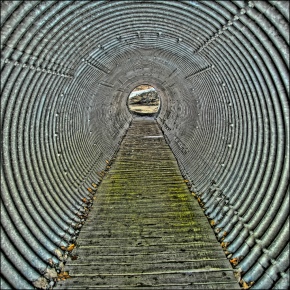 I just watched “Dear Mr. Watterson,” a light-hearted documentary about the impact that Bill Watterson’s ever-famous, ever-persistent comic strip, Calvin & Hobbes, has had on people over the years.
I just watched “Dear Mr. Watterson,” a light-hearted documentary about the impact that Bill Watterson’s ever-famous, ever-persistent comic strip, Calvin & Hobbes, has had on people over the years.
The part that gripped me most was when several prominent cartoonists spoke in extremely gloomy terms about new media.
Berkeley Breathed, the cartoonist behind Opus, Bloom County, and Outland, said that Bill Watterson had created the last great comic strip. He claims that art itself is now “atomized.”
He reasons that there’s a lot of stuff out there, but nothing that could be water-cooler conversation material, a piece of art that people – including Breathed’s mom – all know.
That made me wonder – are artists specializing their work to death? With so few filters to get through, and the freedom to only support the very, very specific, niche work we like, are we guaranteeing that no art can have the same widespread, enduring impact of something like Calvin & Hobbes?
Your Private Art Collection
There’s an irony to Breathed’s comments, because they’re filmed on “Dear Mr. Watterson.” The film itself was a Kickstarter project that I helped fund. It would have never been made if enough hardcore Calvin & Hobbes fans weren’t willing to throw money at it.
And now, we have exactly what we wanted – a Calvin & Hobbes documentary that is essentially inaccessible to people who have never read the strip. Because it was made for a very specific audience – an audience of Calvin & Hobbes fans.
This new era of specialization can reach dizzying heights in the music industry. There are sub-genres of instrumental music called electronica. Those break into dubstep or ambiance or dance varieties.
I have found artists on Pandora that I love that have fewer than 200 Facebook fans. I’ve explored the depths of the Australian progressive metal scene by finding one band on a forum, another from a comment on a Pandora song, and another from a comment on a YouTube video.
My most recent find is an Indian / British band, SkyHarbor. It’s progressive metal. I showed it to my friend, who also likes progressive metal. He complained about the vocals – although he liked the guitar riffs – and showed me another progressive metal band. I didn’t like the vocals from them.
So, with so much variety, we find the art that most closely aligns with our deepest preferences.
Cheeto Art
Jan Eliot, the cartoonist of Stone Soup, was also in the documentary. She claimed that nothing can really grab people’s attention anymore. And, even if it does, that attention is held for just a little while, before everyone moves onto the next thing.
I mentioned this when talking about whether blogging is a waste of time. Sure, posts can help build a “following,” but, at the end of the day, they have the same attributes of Cheetos – “vanishing caloric density” that tingles the reader’s tongue, but leaves no real substance.
Sometimes, I think that it’s easy to forget that the Internet has made us actually have less in common with people than ever. For example, I update this blog semi-regularly, but I don’t think I’ve ever shared any of it on my Facebook profile, where all my “friends” are.
Because I know my friends won’t be interested.
Luckily, thanks to the Internet, I’ve been able to find communities of similarly-minded people – wherever they may be – and associate myself with them, and the stuff they create.
Is this a bad thing?
Is it bad that, nowadays, I can decide that I want to experience the exact media I want?
Cartoons may have been “atomized,” but there are still powerful communities that have formed around strips like Penny-Arcade, PvP Online, XKCD, and many others.
Yes, you can’t refer to them by the water-cooler at work, but you can still find people who talk about them. Online.
For writers, there’s Goodreads. For musicians, there’s YouTube. For everyone, there’s Google. No matter what you do, the Internet has saved art from atomization simply by forming hubs around specific niches of content.
Will we have powerful, artistic thought leaders like Watterson from this digital explosion?
We already have Hugh Howley and, sure, E.L. James. Justin Bieber was a YouTube star, too.
I think that, yes, there’s a risk of “niche-ing” yourself to death when you’re creating art that you know needs no approval but your own. But, when you tap into a mass interest or mass sentiment, you’re still boosted to the top. After all, commercial appeal is why Calvin & Hobbes became popular in the first place. Not because of the distribution or publication methods, but because it struck a common chord.
Conversations are still happening and forming from specialized art, too. Just look what “Dear Mr. Watterson” made me write.

Leave a comment